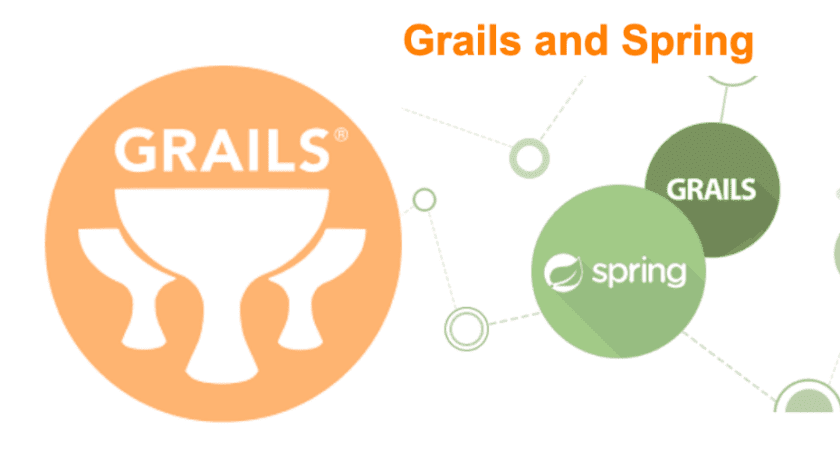Introduction
Groovy and the Spring Framework serve as the foundation for Grails, a full-stack web application framework. It offers an extensive feature set for creating web applications, such as:
- Model-View-Controller (MVC) architecture: The MVC design, which divides an application into three primary components—the model, the view, and the controller—is the foundation for structuring Grails applications. This facilitates the development, testing, and maintenance of the apps.
- Powerful ORM: A strong object-relational mapping (ORM) layer built into Grails facilitates database interaction. Data CRUD (create, read, update, and delete) operations are made simple by the ORM layer’s automatic mapping of database tables to Groovy classes.
- Integrated development environment (IDE) support: Popular IDEs like Eclipse and IntelliJ IDEA can be integrated with Grails. This simplifies the process of creating and debugging Grails apps.
- Robust plugin system: With the help of Grails’ strong plugin system, you can increase the framework’s capability. For Grails, a multitude of plugins covering various functionality including social network integration, security, and authentication are available.
Grails is a good choice for developing a wide variety of web applications, including:
- Content management systems (CMSs)
- E-commerce websites
- Social networking websites
- Enterprise resource planning (ERP) systems
- Customer relationship management (CRM) systems
Grails Fundamentals
Here are some of the fundamental concepts of Grails:
- Domains: A Grails application’s data model is represented by its domains. Groovy classes are utilized to define domains. A table in the database is represented by each domain class.
- Controllers: Controllers respond to user requests by interacting with the domains and handling their processing. Groovy classes are used to define controllers. A particular set of requests is handled by each controller class.
- Views: Views provide the user with the controllers’ replies. To define views, use Groovy templates. Every template file presents a different data view.
- Grails Console: Grails projects can be created and managed using the command-line tool known as the Grails Console. Additionally, it can be used to execute Grails commands, like those that start and terminate the Grails server.
- Grails Plugins: Grails plugins are additions to the Grails framework that enable Grails applications to have new features and functionalities. For Grails, a multitude of plugins covering various functionality including social network integration, security, and authentication are available.
Building Web Applications with Grails
Building web applications with Grails is a straightforward process. Here is a high-level overview of the steps involved:
- Install Grails and Groovy. Grails is compatible with multiple web servers, such as Apache, Nginx, and IIS. Java serves as the foundation for the dynamic programming language Groovy.
- Create a new Grails project. To start a new Grails project, use the create-app command found in the Grails command-line tool.
- Define your domain model. Your application’s data is represented by the domain model. Groovy classes are used to define it.
- Create controllers and views. Controllers respond to user requests by managing their interactions with the domain model. The responses are rendered to the user using views.
- Configure Grails. Your domain model, controllers, and views must be configured for Grails to know where to find them.
- Start Grails. Once Grails is configured, you can start it using the start command.
Advanced Grails Features
Several cutting-edge capabilities are available for developers using the robust web application framework Grails. Here are a few of these attributes:
- Asynchronous programming: With the help of the Spring Async framework, Grails facilitates asynchronous programming. This makes it possible for programmers to write concurrent code, which enhances an application’s scalability and performance.
- Reactive programming: Reactive programming with the RxJava framework is also supported by Grails. This makes it possible for programmers to create code that reacts to events quickly and effectively.
- Messaging: Spring Messaging is the messaging framework that Grails supports. This enables developers to use messages to exchange information between various application components.
- Caching: The Spring Cache framework is used to provide caching in Grails. By caching frequently used data, this enables developers to enhance the application’s performance.
- Internationalization and localization: Grails provides support for Spring Boot Actuator-based internationalization and localization (i18n/l10n). This makes it possible for programmers to make apps that people speaking many languages and cultures can utilize.
Conclusion
Finally, “Grails in Action” provides an in-depth exploration of web application development using the Grails framework. With the knowledge and abilities provided by this guide, developers may effectively design dynamic, feature-rich online applications by utilizing the combined power of Grails and Groovy. It’s a priceless tool for novice and seasoned developers alike.Read about our other post at codingshikho.com
